How today's fastest growing B2B businesses found their first ten customers
Lessons from Figma, Stripe, Airtable, Shopify, Carta, Gusto and many many more
Hello, and welcome to a free monthly edition of my weekly newsletter. I’m Lenny and each week I tackle reader questions about product, growth, and working with humans, and anything else that’s stressing you out at the office 🤜🤛
P.S. Don’t miss the follow-up to this post: How today's fastest-growing B2B startups turned their early users into paying customers
Q: How did the fastest growing B2B businesses find their first ten customers?
“In the early days of Figma, we talked with practically every designer we knew. In search of more feedback, we turned to Twitter which I realized we could use to determine the most influential designers. After getting the data, I further filtered the list to people that were personally inspirational to me. Then I cold emailed / found introductions to many of these people and showed them Figma.”
— Dylan Field, CEO
Here, Dylan shares how he leveraged (what turns out to be) two of three growth levers used by essentially every B2B businesses to get started:
👋 Tapping your personal network (i.e. his friends)
🧗♀️ Seeking out your customers where they are (i.e. Twitter)
🗞 Getting press
Below, you’ll learn how twenty other hyper-growth B2B businesses found their earliest customers — including stories from Shopify, Stripe, Airtable, Plaid, Gusto, Salesforce, Slack and many more. A number of these stories are being shared publicly for the first time. In a follow-up post (for paid-subscribers only), I’ll share how these companies closed their first ten customers.
Why first ten customers? Because that’s when you’re most scrappy and doing things that don’t scale. In follow-up posts, I’m also going to look into how these companies approached their first 100, and then 1,000 customers. Stay tuned.
I hadn’t actually planned on digging into this topic, but immediately after publishing a piece about early consumer app growth, I began getting this question from B2B founders. I couldn’t resist digging in, and I’m happy I didn’t. I ended up spending 40+ hours digging through old interviews, seeking out warm introductions to founders, and sliding into countless DMs. It turns out getting these early B2B stories was a lot harder than it was for consumer apps ¯\_(ツ)_/¯
This post was only possible thanks to the generosity of countless founders, early employees, and tons of helpful Twitter friends who contributed to this post in some way. You can find the full list of contributors at end of the post. Thank you all ❤️
Without further ado, let’s dive in!
Biggest takeaways:
Only three sourcing strategies account for every B2B company’s very early growth (unlike the seven strategies for consumer apps). Thus, your choices are easy, yet limited.
In practice, it’s even easier — almost every B2B business BOTH hits up their personal network AND heads to the places their potential customers were spending time. The question isn’t which of these two routes to pursue, but instead how far your own network will take you before you move on.
It’s a huge advantage to have a strong personal network in B2B, which you can also build by bringing on a connector investor or joining an incubator such as YC.
Tapping your personal network is even more important if you need to “sell” your product (i.e. not going bottom-up), likely because early customers need to have a reason to trust you.
Getting press is rarely the way to get started
Read on for the strategies and stories. Just for fun I’ve included screenshot of what each company’s website looked like early-on 🤪
Strategy 1: Tap your personal network 👋
Key question: Who in your network could be a potential customer?
Slack — Friends
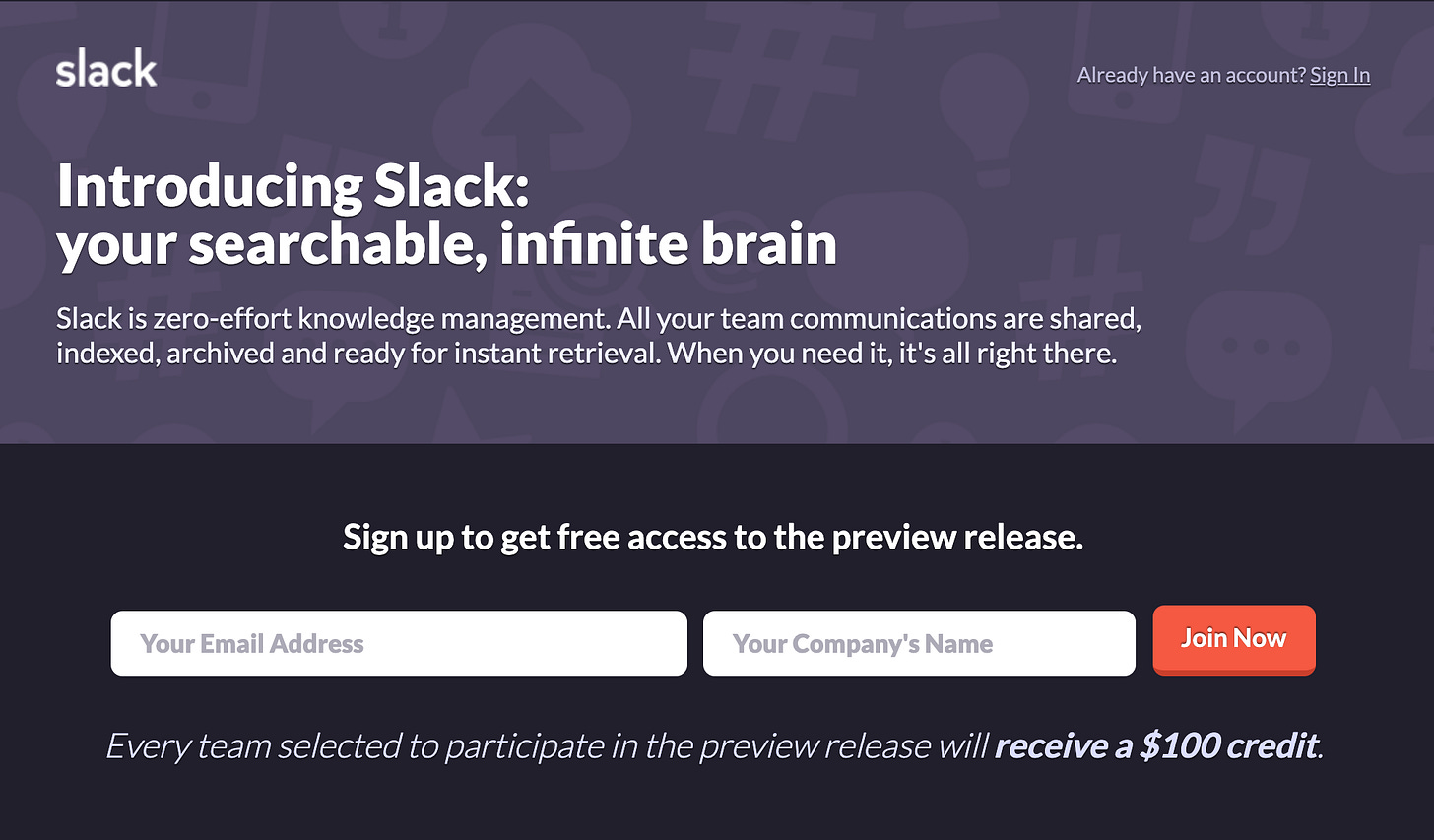
“We begged and cajoled our friends at other companies to try it out and give us feedback. We had maybe six to ten companies to start with that we found this way. The pattern was to share Slack with progressively larger groups. We amplified the feedback we got at each stage by adding more teams.”
— Stewart Butterfield, CEO (source)
Asana — Friends and former colleagues
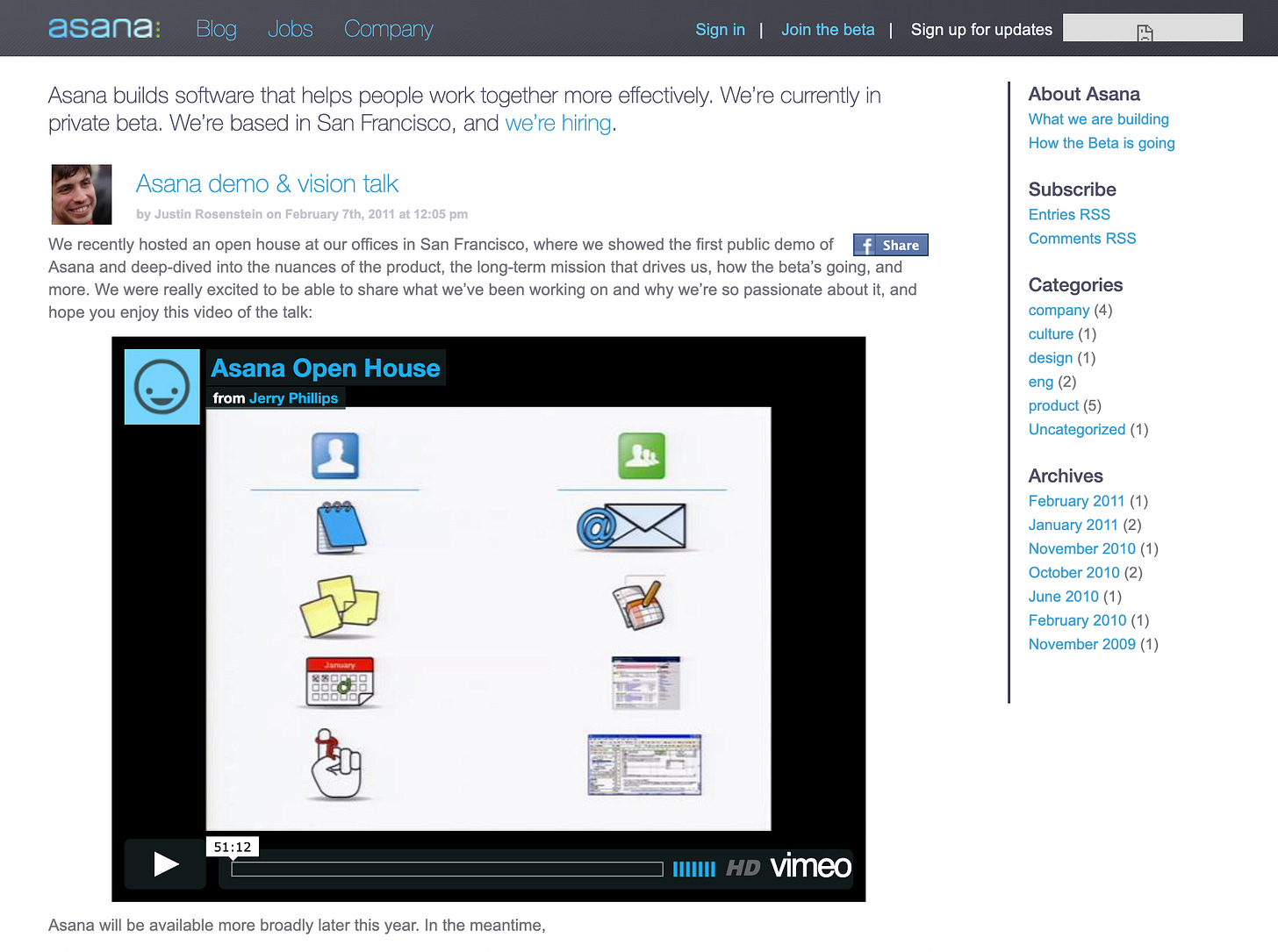
“Almost all of (our first ~15 users) are people we are personally close to. We're currently focused on making them really happy with their experience – rounding out the feature set, responding to their feedback, fixing bugs, and improving performance.
As that continues, we'll continue to roll the alpha product out gradually to more and more people. There probably won't be any particular floodgate moment, more of a steady influx of new users.”
— Justin Rosenstein, CPO and co-founder (source)
Salesforce — Former colleagues
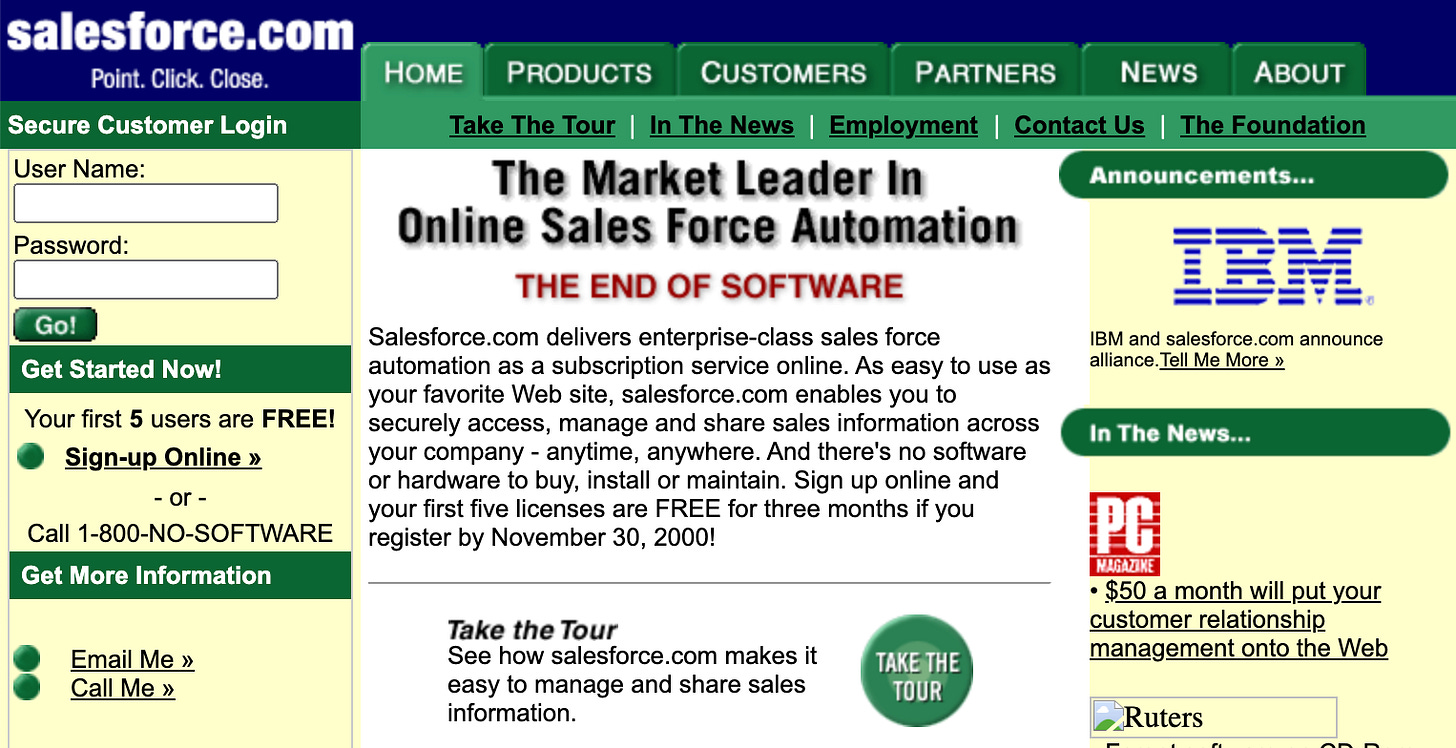
“It was challenging to convince prospects to try our service, and it was especially challenging to convince the first one. Most people don’t want to be the first to take a giant risk. Realizing that truism was pivotal. We finessed our strategy to target pioneers who saw an opportunity to participate in something new and exciting.
That first pioneer came in the form of Blue Martini Software, one of the small software companies in which I had previously invested. I knew I was asking for a favor when I called the founder, Monte Zweben, but I also knew I was offering something that he really needed. […]
We did not have a formal sales organization at this time so in our quest for early customers, everyone on the salesforce.com team was encouraged to contact anyone he or she knew in any industry, or at any start-up. Diane Mark, our product manager, won our second client while she was standing in line at the local market, Mollie Stone’s. She ran into a former colleague who was working as a sales manager at iSyndicate, a company that sold syndicated content over the Web. She asked him what the company used to manage its sales process. “ACT! And Excel,” he replied. “It’s a mess.”
— Marc Benioff, CEO (source)
Carta — Investors
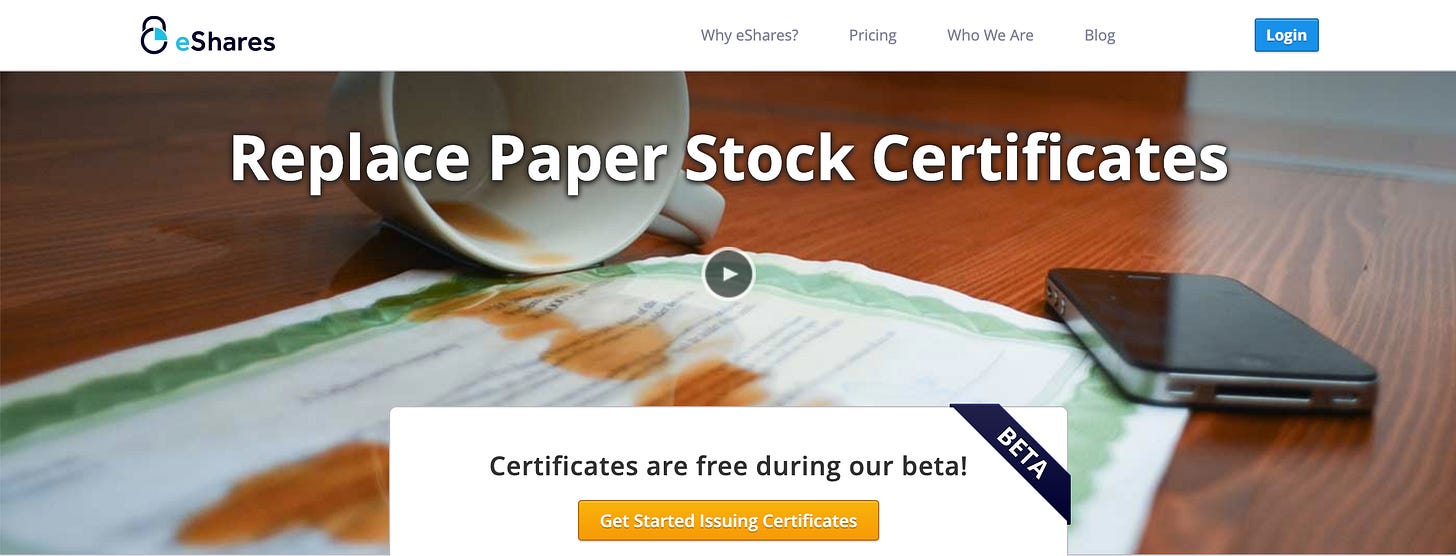
“Our very early customers came from two places:
The angel investors in our company: Andy Palmer from Tamr was an investor in eShares, and brought it into his company early on.
Sister portfolio founders: We had this personal connection to them through our investors.
Other than that, it was just working the network.”
— Joshua Merrill, ex-CPO
Gusto — Friends and incubator peers
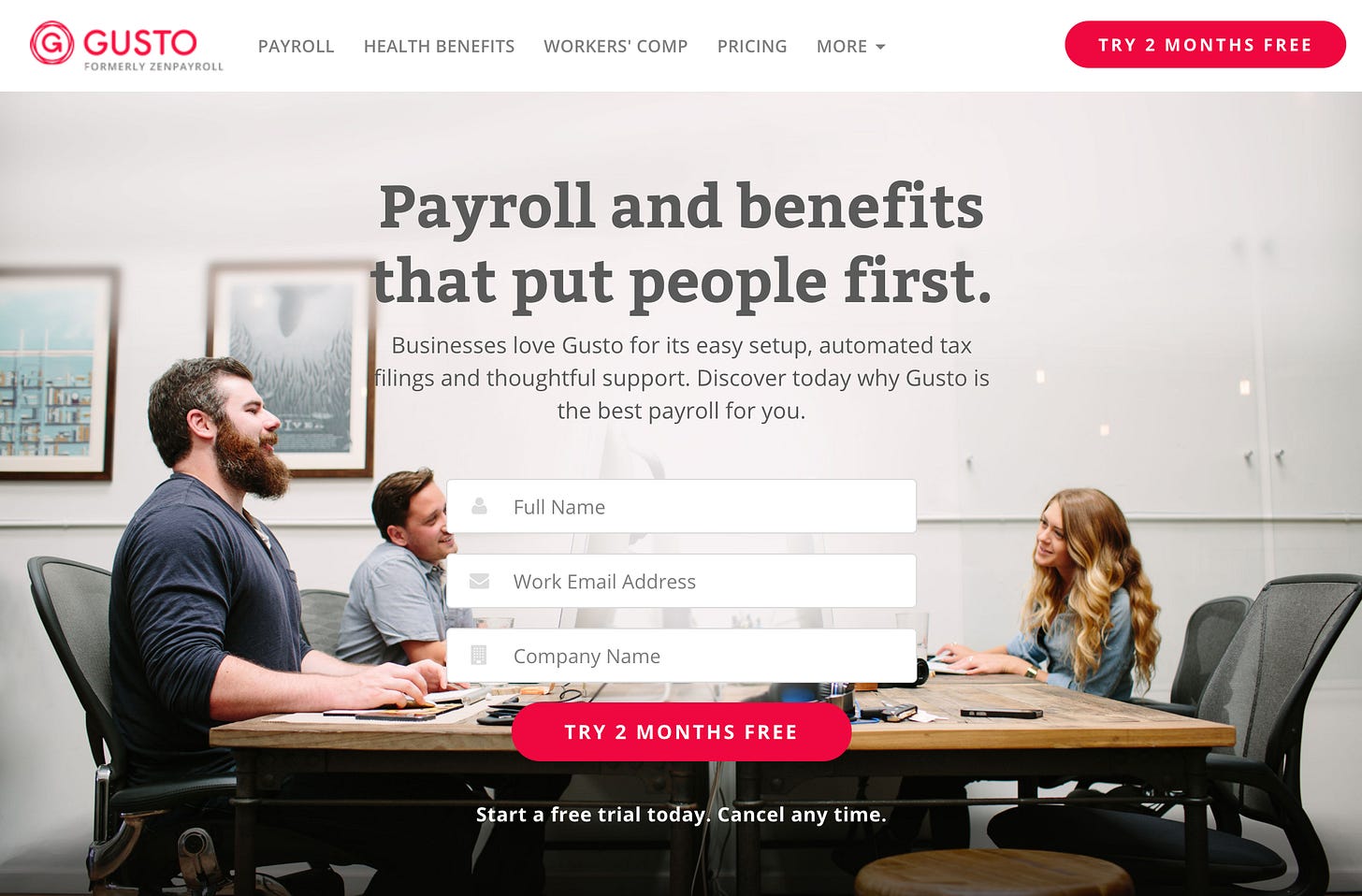
“Gusto's first 10 customers came from friends we knew who were just starting their businesses in CA. Mostly new tech startups from our YC batch, but also non-tech small businesses (like a children's swimming camp) that we happened to know through family and friends. We basically (three founders) went around telling everyone we knew that we're building a modern delightful payroll and HR system and asked if they'd know someone who'd be interested in trying it out.”
— Tomer London, CPO and co-founder
Stripe — Friends and incubator peers
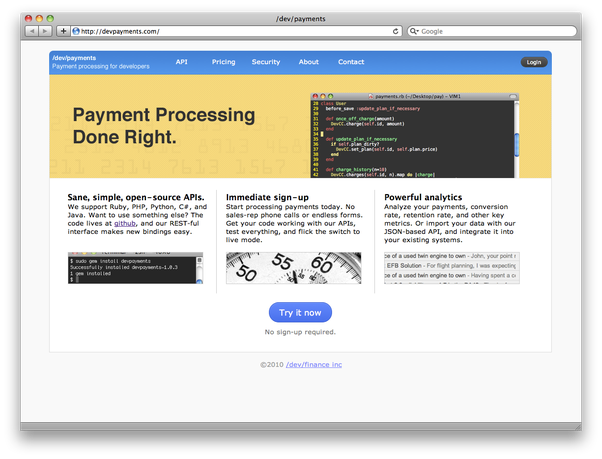
“At YC we use the term Collison installation for the technique they invented. More diffident founders ask Will you try our beta? and if the answer is yes, they say Great, we'll send you a link. But the Collison brothers weren't going to wait. When anyone agreed to try Stripe they'd say ‘Right then, give me your laptop’ and set them up on the spot.”
— Paul Graham (source)
“Our first user actually became one of the first employees at Stripe. I had known Ross Boucher for a couple of years. We were working on a payments system, and he needed a payments system, so I just suggested, hey, do you want to try this out? I didn’t emphasize how early on it was was.
What indicated to us that there was something interesting here was that our friends who were using it asked if they could invite their friends, and those people invited their friends, and it spread through word of mouth process.”
— Patrick Collison, CEO (source)
Amplitude — Incubator peers
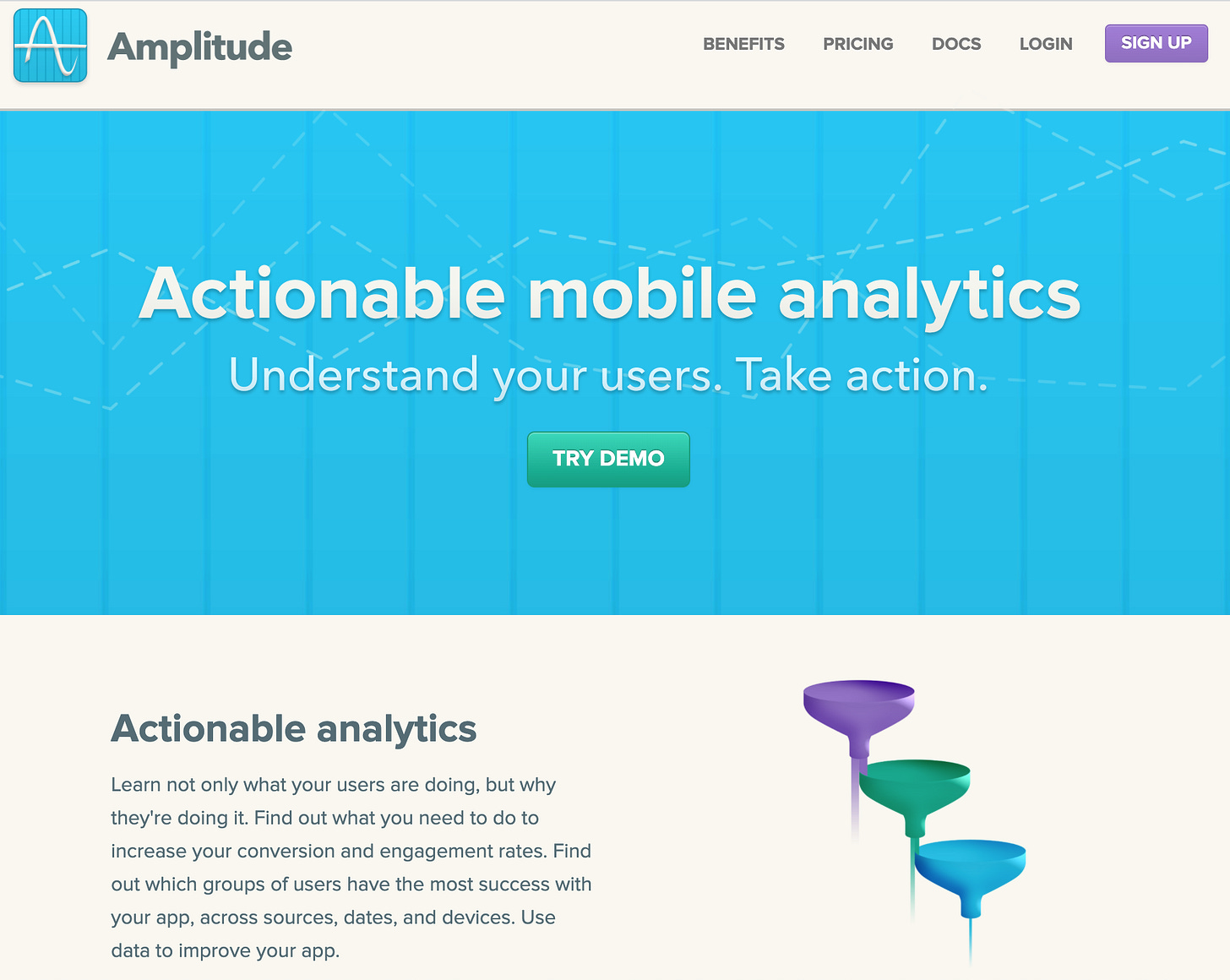
“Amplitude's first customers came from the YC network. Spenser and Curtis were working on another startup called Sonalight during YC and built an early version of Amplitude to answer why users weren't retaining – other YC companies in their cohort wanted to use it too since they had questions existing tools couldn't answer. They quickly realized Amplitude was their biggest opportunity.”
— Tai Rattigan, ex-Head of Partnerships
Workday — Former colleagues
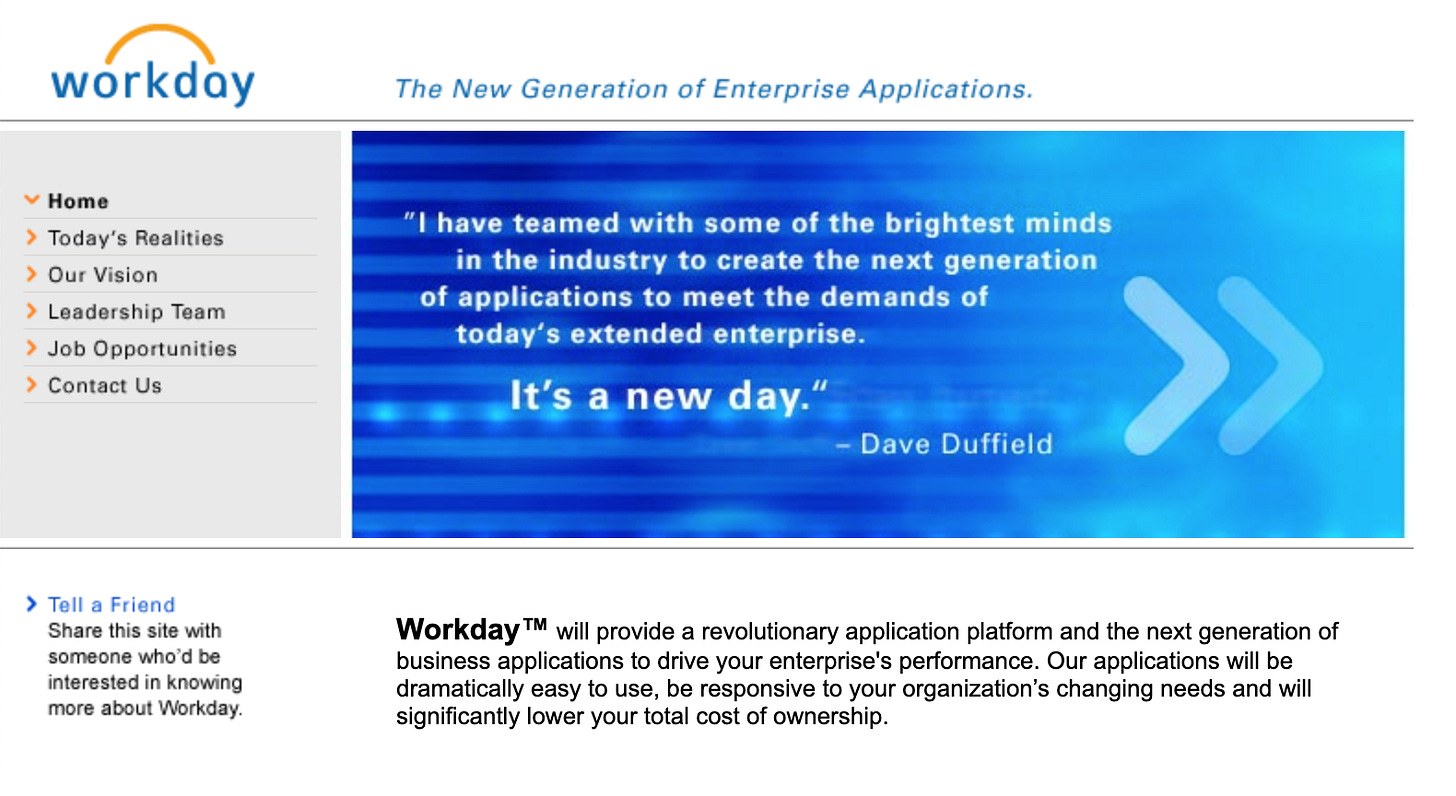
“Workday's earliest customers consisted mostly of midsize-company CEOs who knew the founders. They bought the friendship, not the software.”
— Dave Duffield, ex-CEO (source)
Looker — Former colleagues and investors
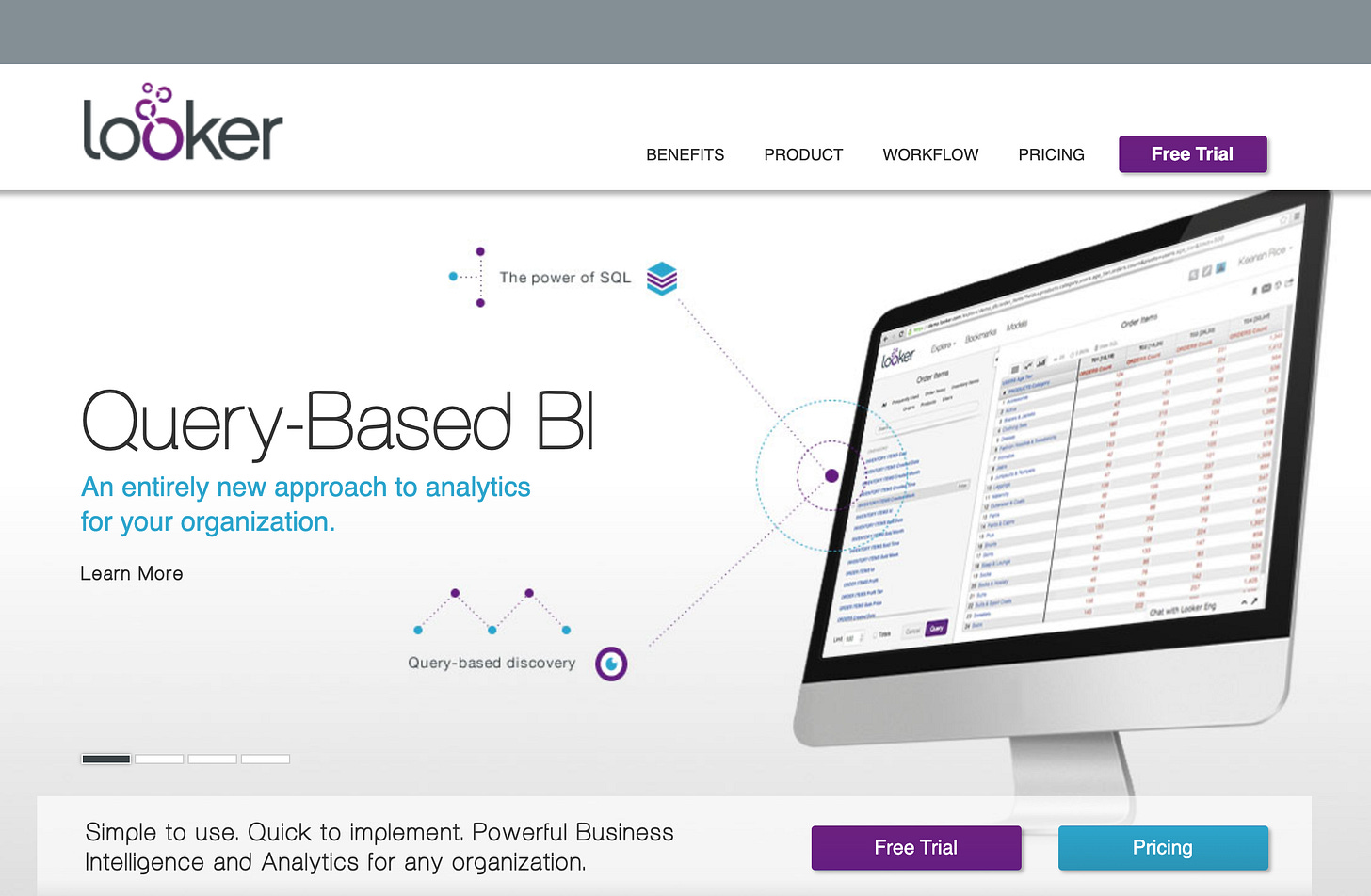
“Networks are one of the most important but often overlooked opportunities in the B2B space. Looker was fortunate enough to acquire its first 10+ customers via networks (and we continue to benefit from networks to this day). This wasn't just our personal network, but our customer's & investor's networks as well. To get the most out of these networks we simply did two things:
Spent endless energy on making our early customers as successful and happy as we possibly could.
Asked our customers to share their success with others by putting a few simple programs in place to allow them to evangelize.”
— Keenan Rice, early employee and VP Strategic Alliances at Looker
Coda — Former colleagues
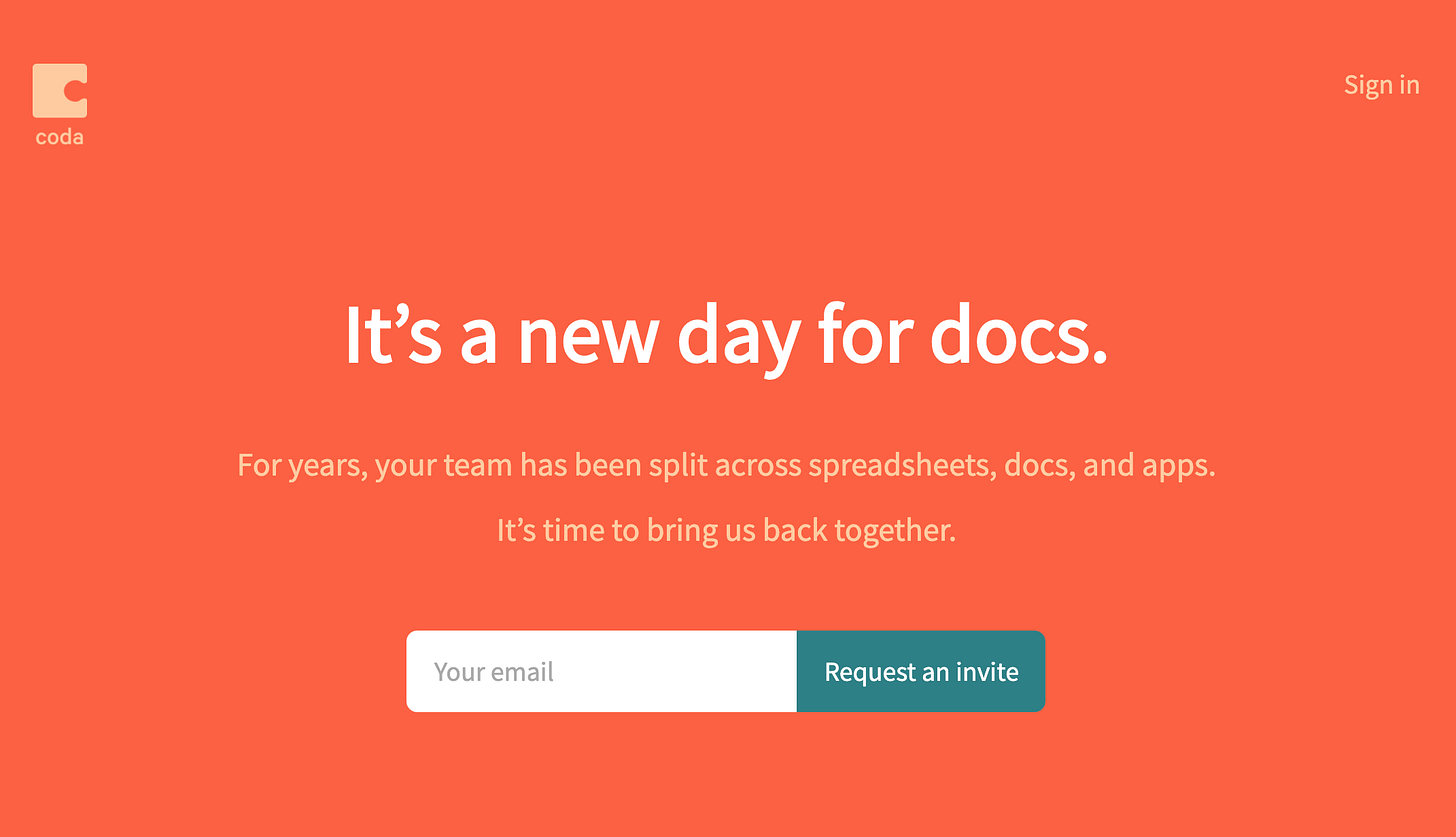
“When we started Coda, we decided to build in stealth so we could stay focused on the product and stay out of the public eye. Our first alpha trial was with a small startup run by a past colleague of mine from YouTube. The whole company used the product productively for a couple months, but then they all churned in one day. It was a low point for us — losing 100% of your user base in one day is tough!
Thankfully, the startup CEO was very supportive and gave us great feedback ーthe team was aligned with the vision of what we were building, but required a list (a long list!) of specific action items to complete before they would try Coda again. That feedback motivated us and led to a much better product. Key lesson: the customers you lose may be the source of your best feedback.”
— Shishir Mehrotra, CEO
Okta — Former colleagues
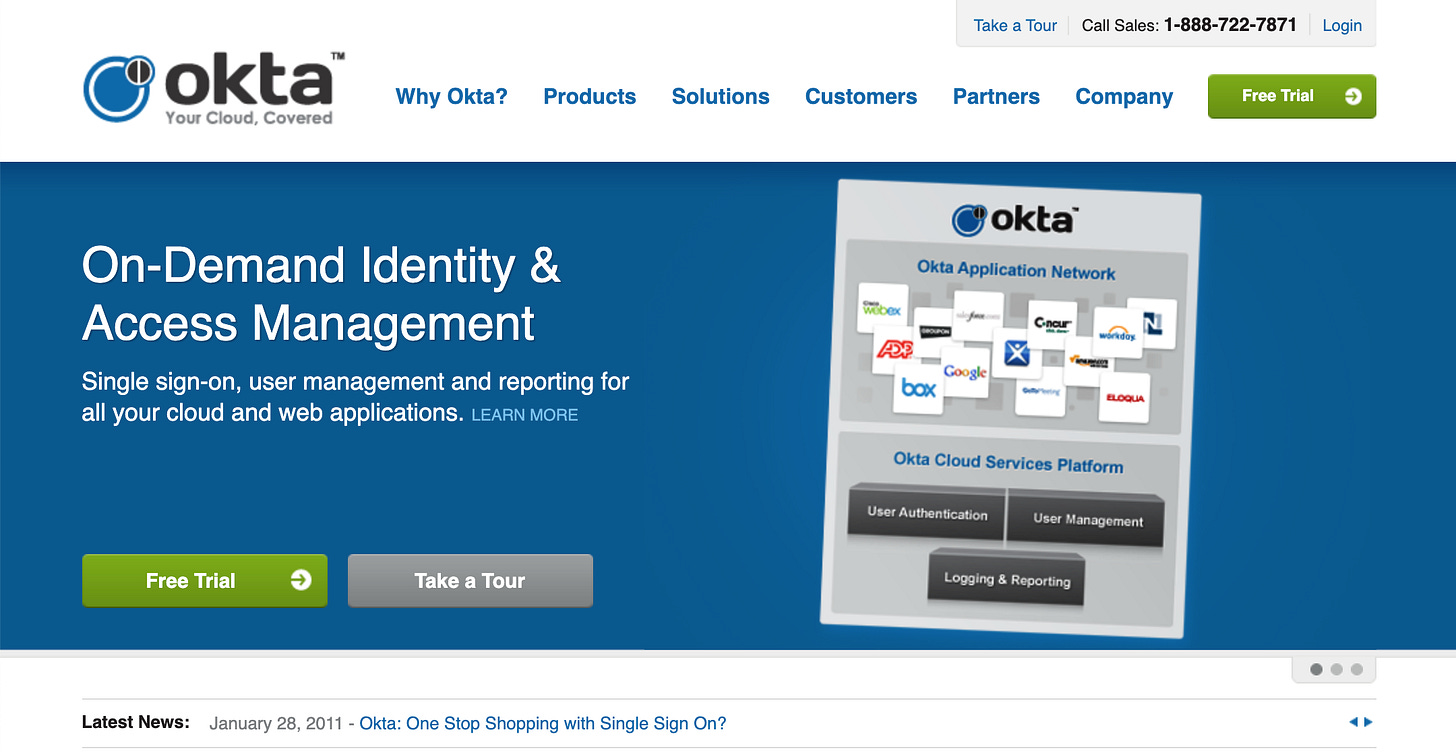
“We reached out to our networks, folks we knew in IT from Salesforce.com and past jobs. We networked aggressively on LinkedIn with our alma mater networks etc. We asked our angel investors and combed their LinkedIn networks. I had a target of 15-18 net new IT folks / different companies to talk to every month for the first 6 months and probably hit 85% + of my quota.”
— Frederic Kerrest, COO and co-founder
Intercom — Former colleagues
“It was basically ‘Do things that make people find out about Intercom’. Our previous businesses had helped us grow a network of people who would listen to us, so they were the first people we reached out to. So all day every day I’d email people to tell them about Intercom, show them what Intercom might look like for them, and hear their feedback. I did this 100% by hand and if I was to do it all again today I’d still do it by hand. Honestly.
This is what it looked like:
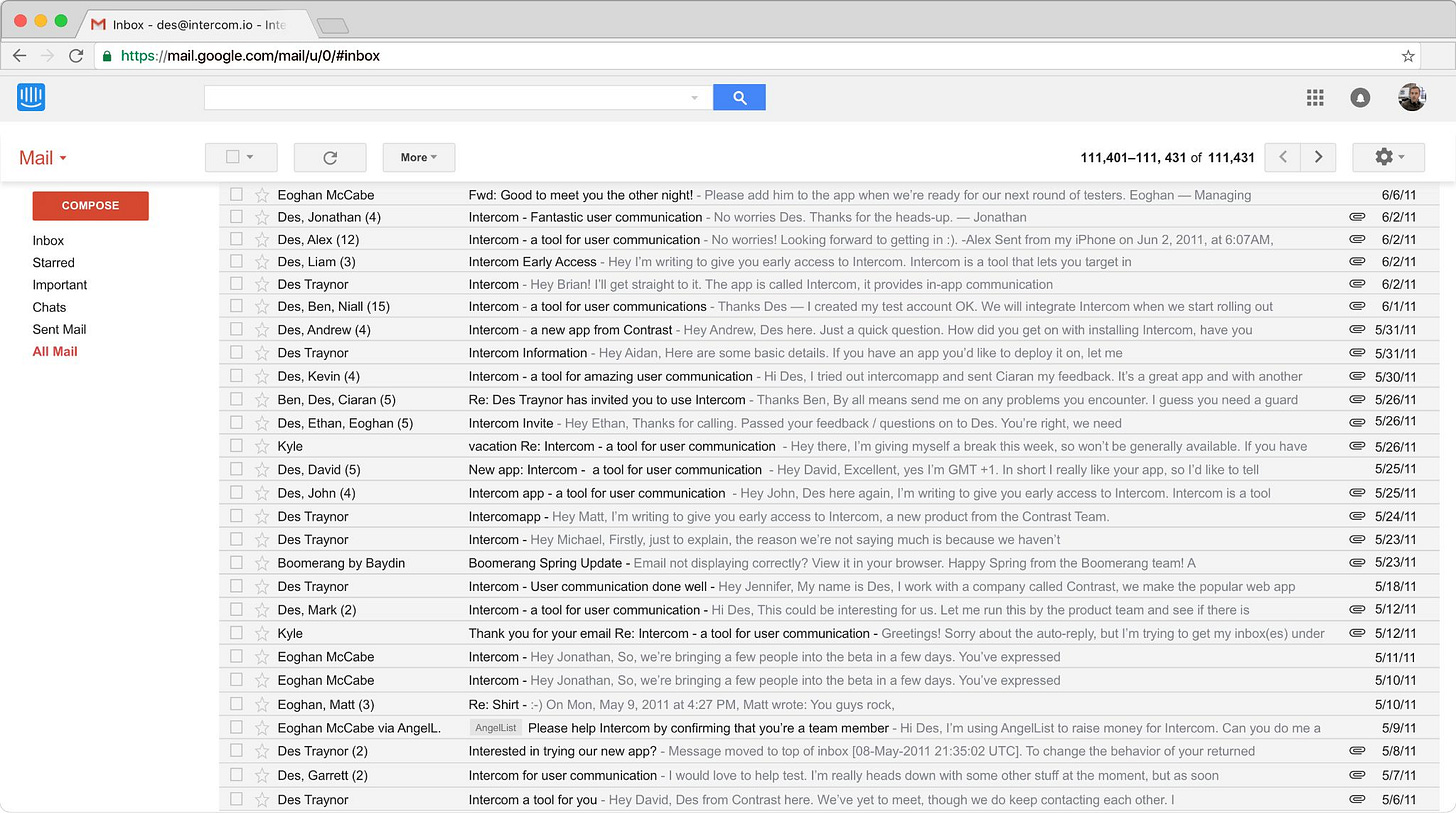
— Des Traynor, CSO and co-founder (source)
Strategy 2: Seek out your customers where they are 🧗♀️
Key question: Who are your target customers, and where they currently spending time, online or offline? e.g. communities, forums, offline events
Shopify — Ruby on Rails community
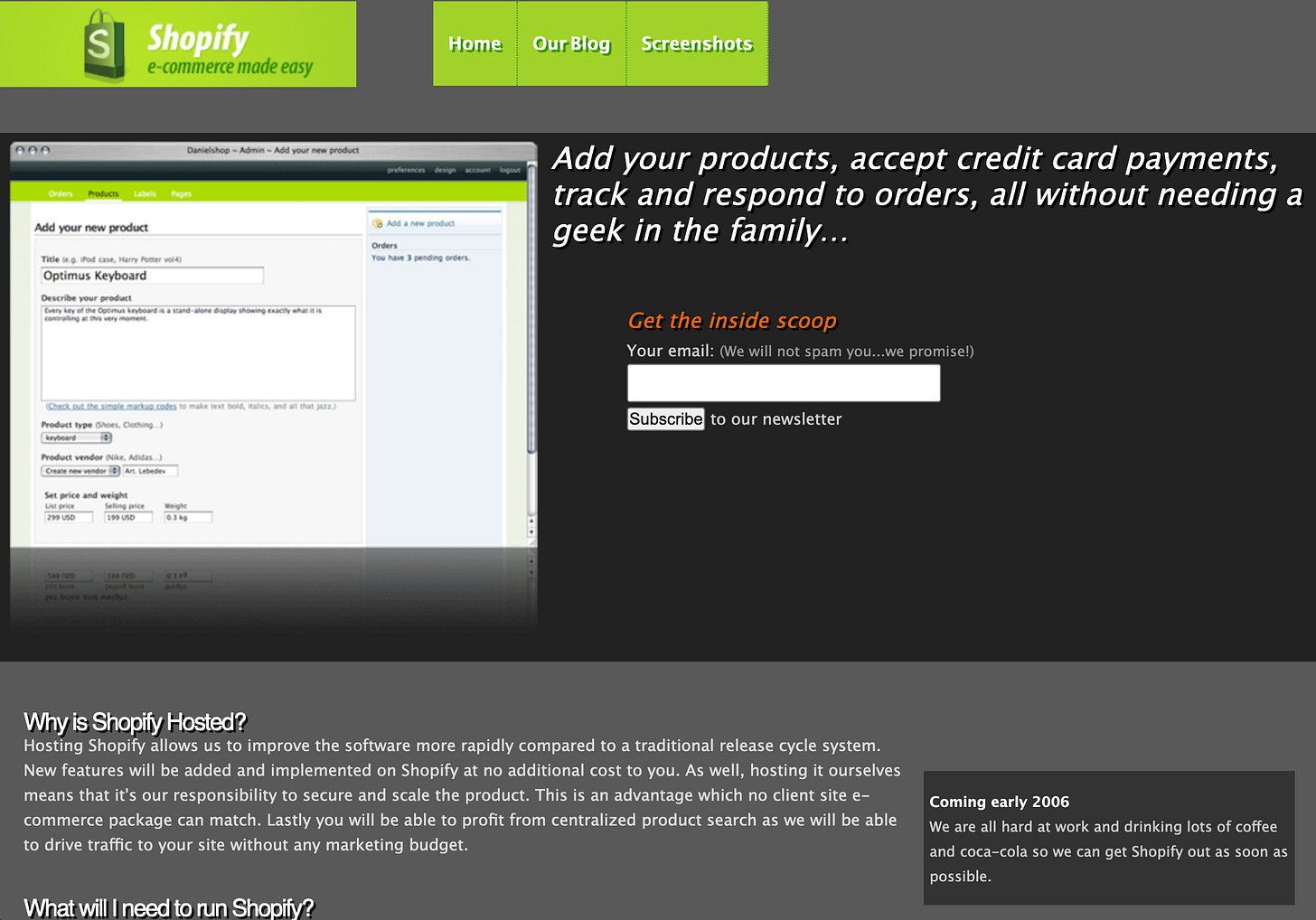
“When I built SnowDevil (my online snowboard store), some colleagues in the Ruby On Rails developer community asked if I’d license the code from our store. That pointed me to building Shopify.
We had an early waitlist, with a few thousand emails that we launched to. This was in 2006. Looking back, it actually set the pattern for a lot of SaaS. We launched the beta and had a few hundred stores. Still some of those cohort selling today!”
— Tobi Lütke, CEO
New Relic — Ruby on Rails community
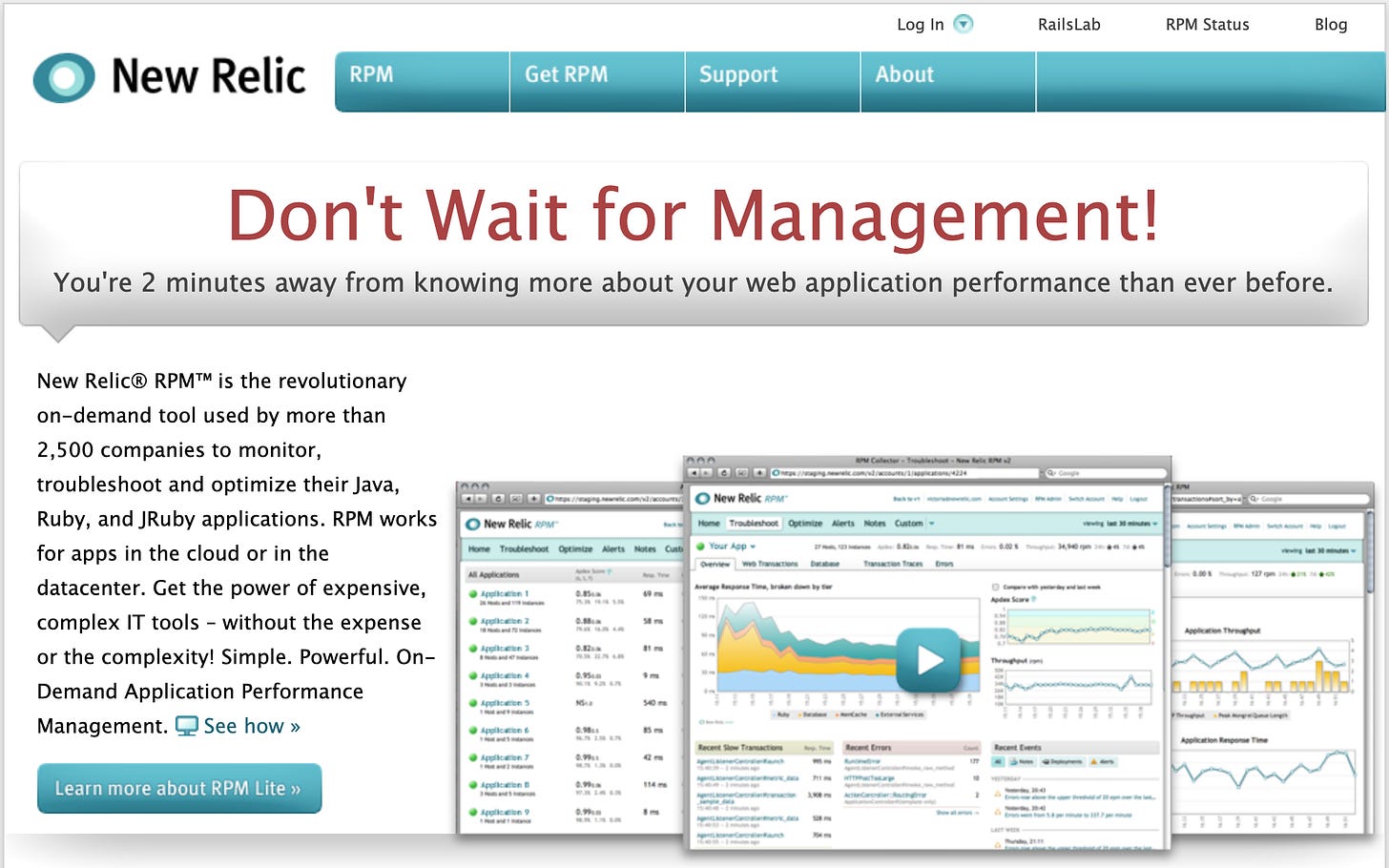
“New Relic started in late 2007, focused squarely on the relatively small but rapidly growing Ruby on Rails market. At that time, Rails was growing in reputation but, it was far from mainstream…I figured it was a good market opportunity for a new startup: not too big to attract a ton of well funded competition, but large enough (and more importantly growing quickly enough) to support an early stage company.
Rails developers are known for adopting the latest technologies, and passionately supporting products that rock, while brutally and vocally criticizing products don't meet their high standards. We were not the first product to target the Rails market, but we believe we had a strong product that immediately earned the support from thought leaders in the rails community. These included highly visible members of the Rails community like DHH, Tobi Luetke, Rick Olson, Obie Fernandez, Tom Mornini and many others. This kind of endorsement can't be bought; it needs to be earned. It had amazing impact on our early traction.”
— Lew Cirne, CEO (source)
Plaid — Online developer and PM communities
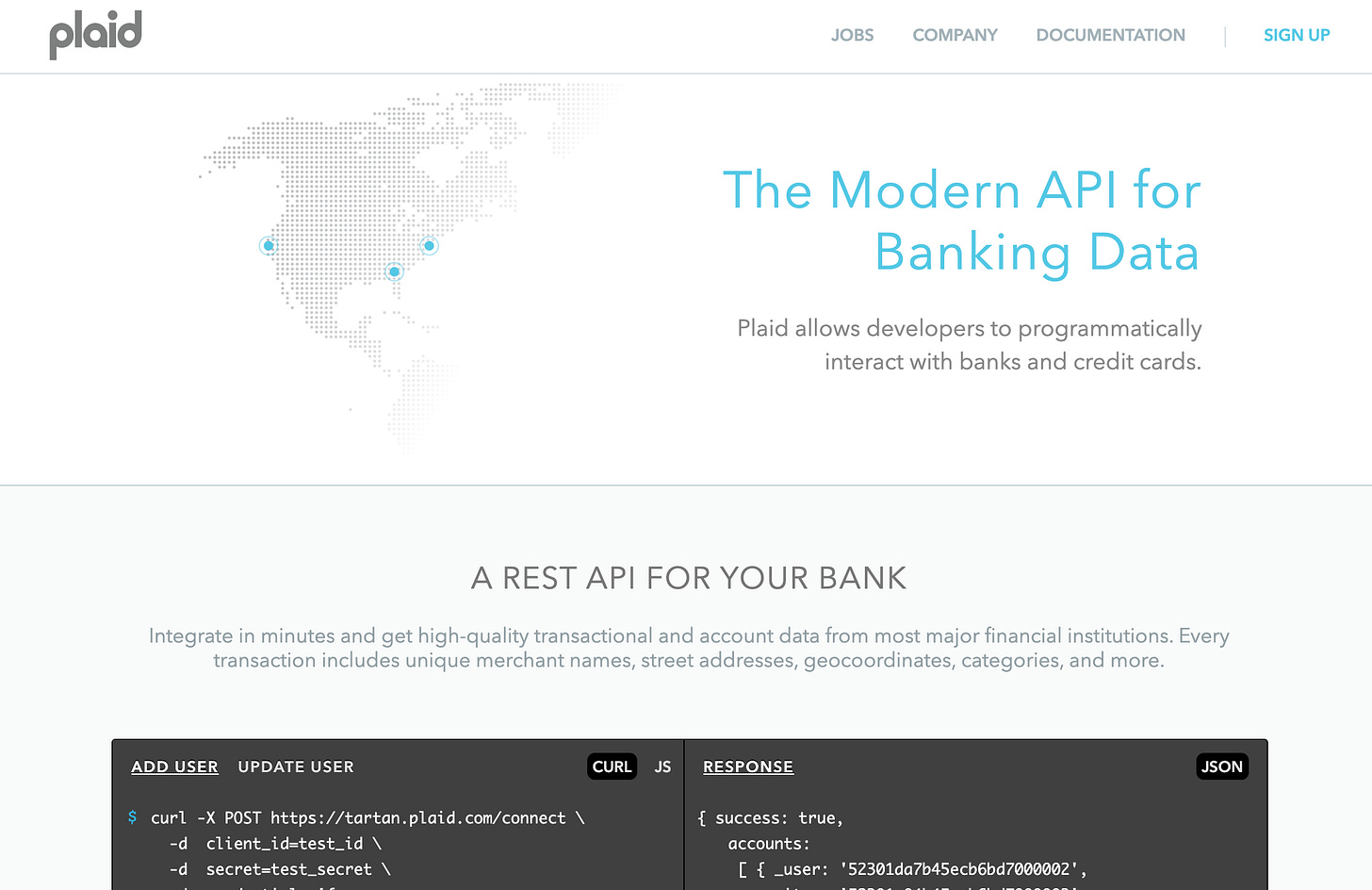
“Prior to Plaid, we spent 9 months building consumer financial products, and ended up deciding to create Plaid out of our own frustration with the lack of good infrastructure. We actually became our own first customer. From there, we mostly grew through word of mouth in the developer and product manager community. We invested in meeting founders of fintech companies, learning their problems, and seeing how Plaid could help. Lots of time spent on forums, IRC, meetups, and working with startup accelerators.”
— Zach Perret, CEO and co-founder
Figma — Twitter

“In the early days of Figma, we talked with practically every designer we knew. In search of more feedback, we turned to Twitter which I realized we could use to determine the most influential designers. After getting the data, I further filtered the list to people that were personally inspirational to me. Then I cold emailed / found introductions to many of these people and showed them Figma. At the time, Figma was early, but this resulted in all sorts of incredible feedback. As we evolved the product, we kept these designers in the loop about what was changing. By the time we launched, we had built a relationship with these customers and many amplified our message.
Fun fact: Coda (then called Krypton) was the first team to adopt Figma!”
— Dylan Field, CEO
Square — Going door to door to SMBs
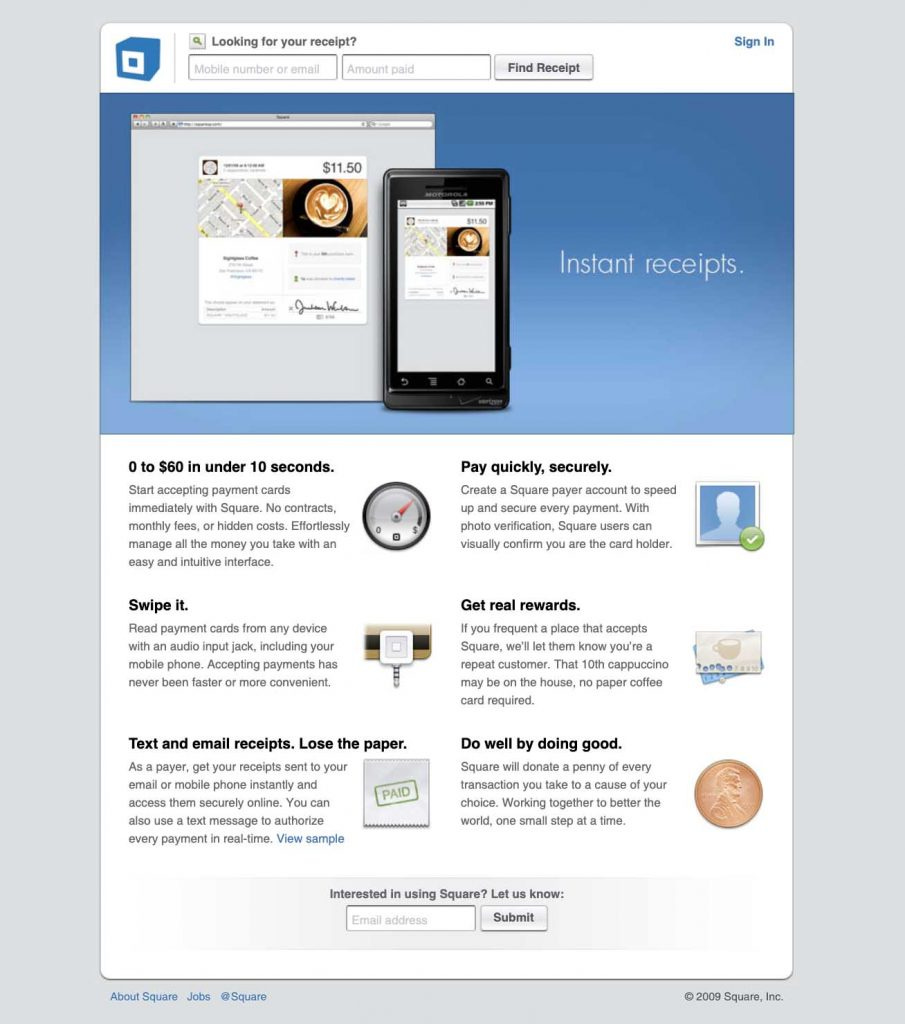
“Jack 100% tapped his personal network to get ‘Clubhouse’-type people on Square, but they didn't really create repeat usage or become real customers. Cheri Mims of Lillybelle Flowers and Sightglass Coffee were actual merchants we could walk to and speak with. They were our first real every-day-use customers. We could visit them multiple times per week to see what worked and what didn't, allowing us to refine the product. We continued to reach out to local businesses we patronized and convinced some of them to use Square when we were still quite young.”
— Cameron Walters, Square founding team
Atlassian — Open source community
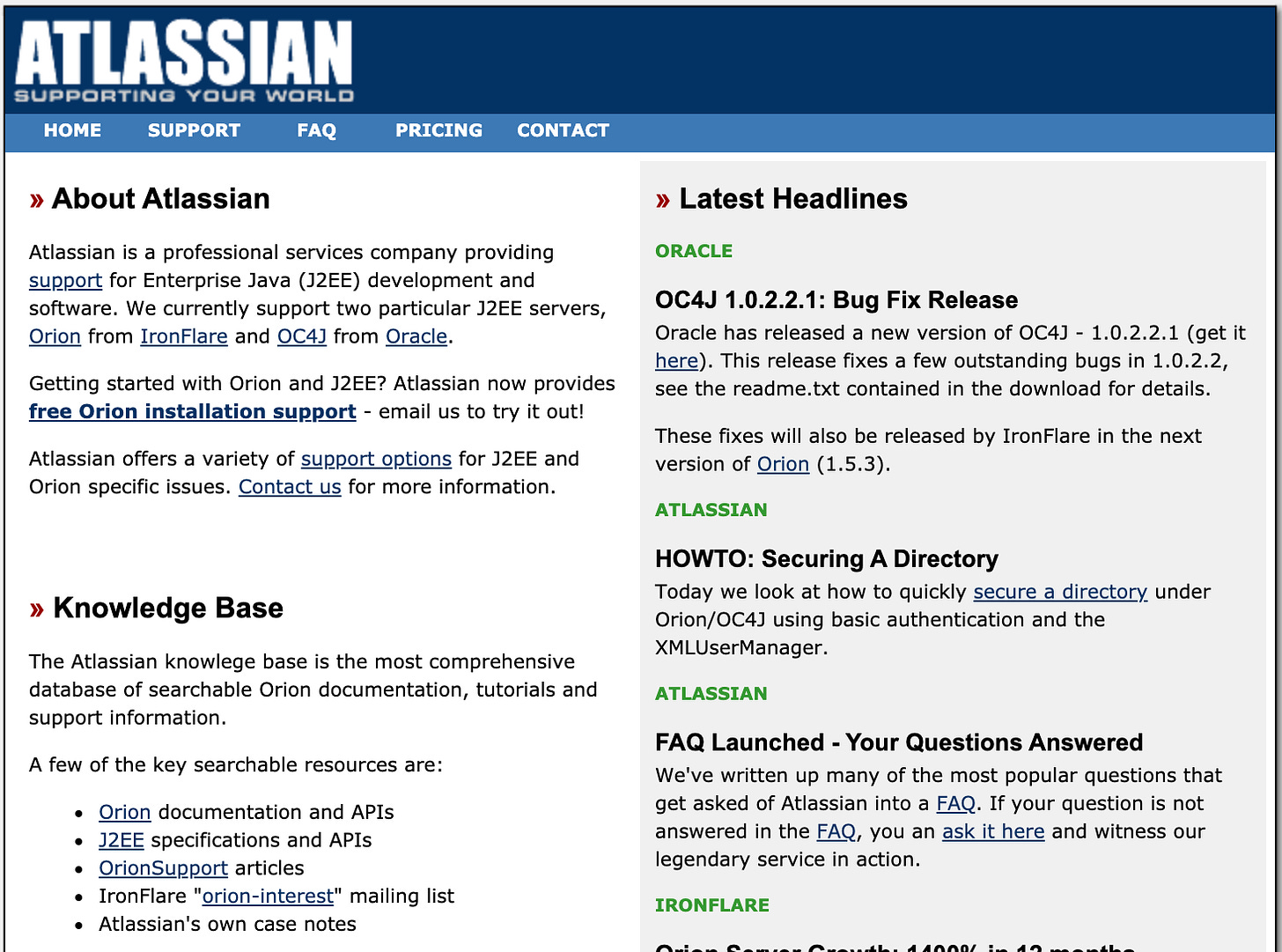
“Open source helped. Communities (mailing lists! newsgroups! IRC!) helped. Constant marketing (Jira Jira Jira Mike was my name for a while). Free beer. Uneconomic prices. Great customer service.”
— Mike Cannon-Brooks, CEO
Segment — Hacker News
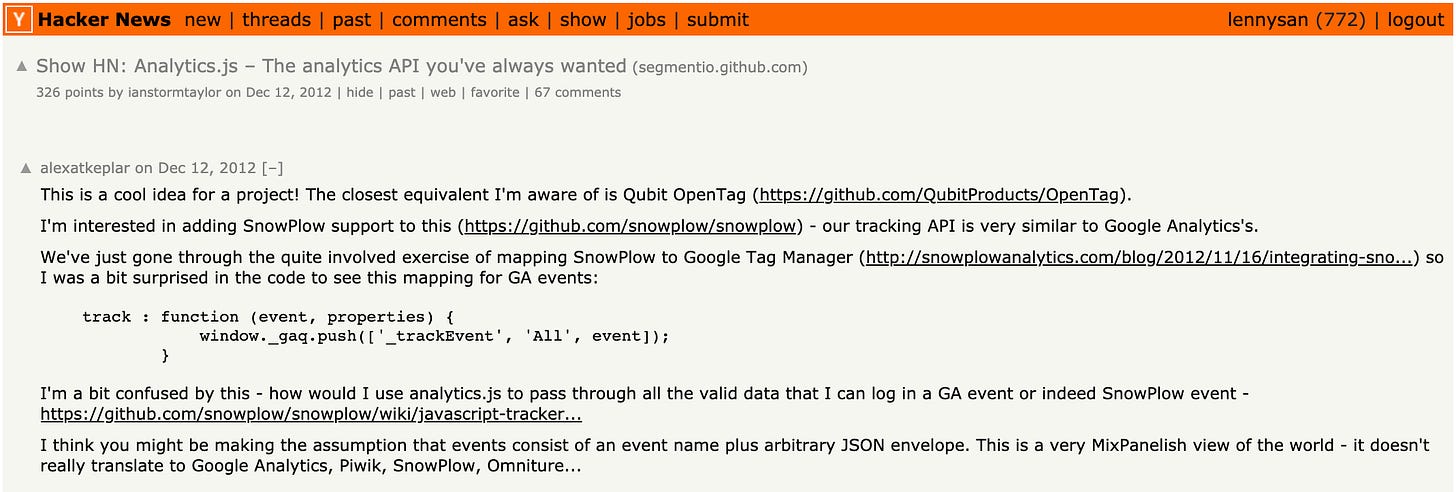
“At the very beginning we actually launched as an open-source library on Hacker News. It took off there, blew up basically over night. Our first customers were the folks hanging out on Hacker News. It was basically small companies for the most part. Founders who were looking for better ways to instrument their web applications and mobile apps with this sort of analytics tracking.”
— Peter Reinhardt, CEO (source)
Airtable — Hacker News
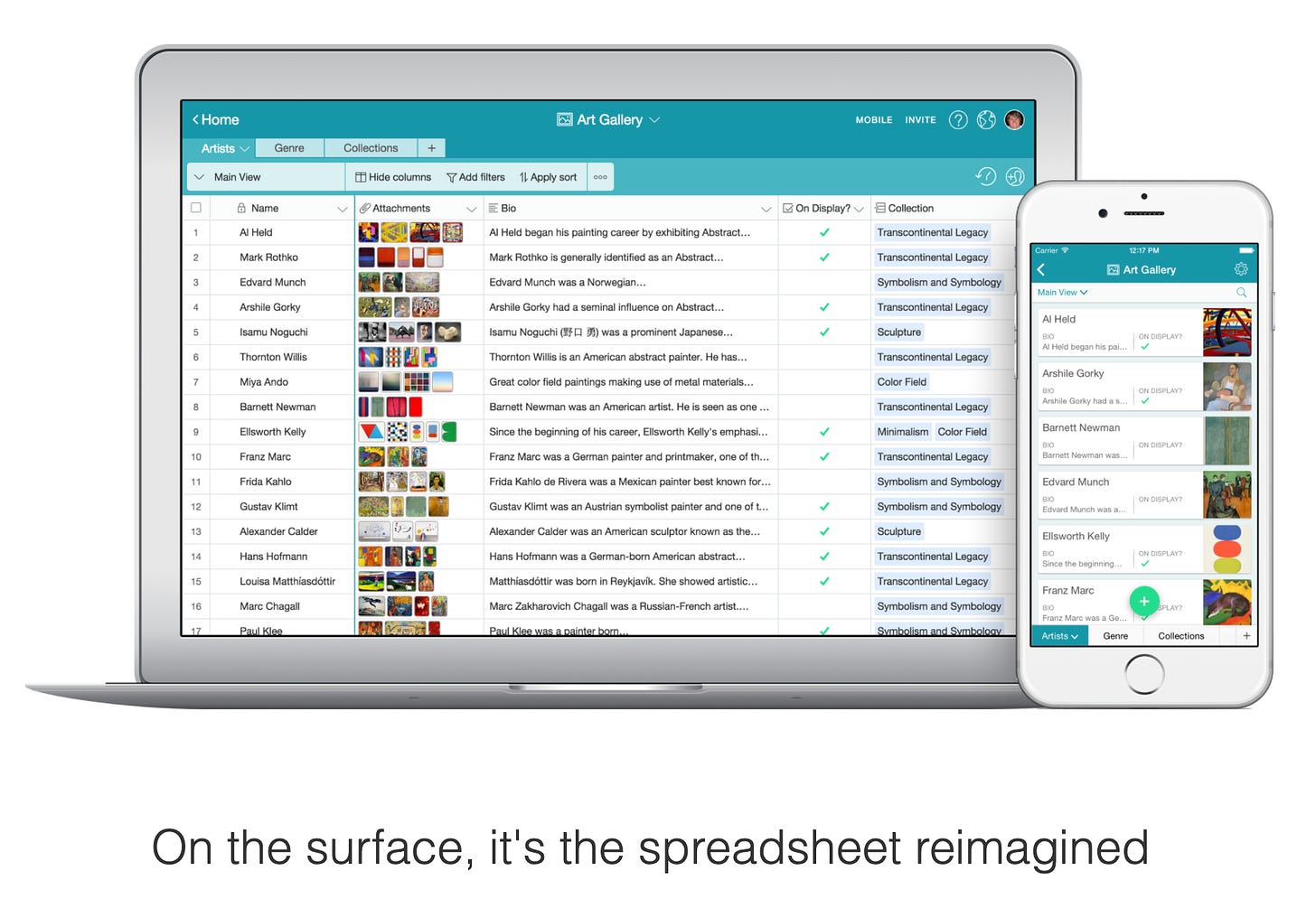
“It was friends and family first, then Howie posted the beta on Hacker News (which is how I found the product myself). After that, the biggest mechanism was word of mouth by *far*.
At the time we hadn't even actually committed to primarily focusing on B2B — when I joined, we were doing both B2B AND B2C.”
— Anonymous early employee
Dropbox — Hacker News
“Drew created a simple video, demoing the product, and published it on April 2007 on Hacker News with the title "My YC app: Dropbox – Throw away your USB drive. That video brought the first users to the emerging Dropbox.”
— John Popel (source)
Strategy 3: Press 🗞
Key question: What’s a unique and untold story you can pitch press?
Canva
"Because we had some high profile investors we’d been fortunate to receive a bit of press around our ‘stealth startup’ and had 50k people signed up on our waiting list. We desperately wanted to ensure they liked our product when we launched.”
— Melanie Perkins, CEO (source)
Twilio
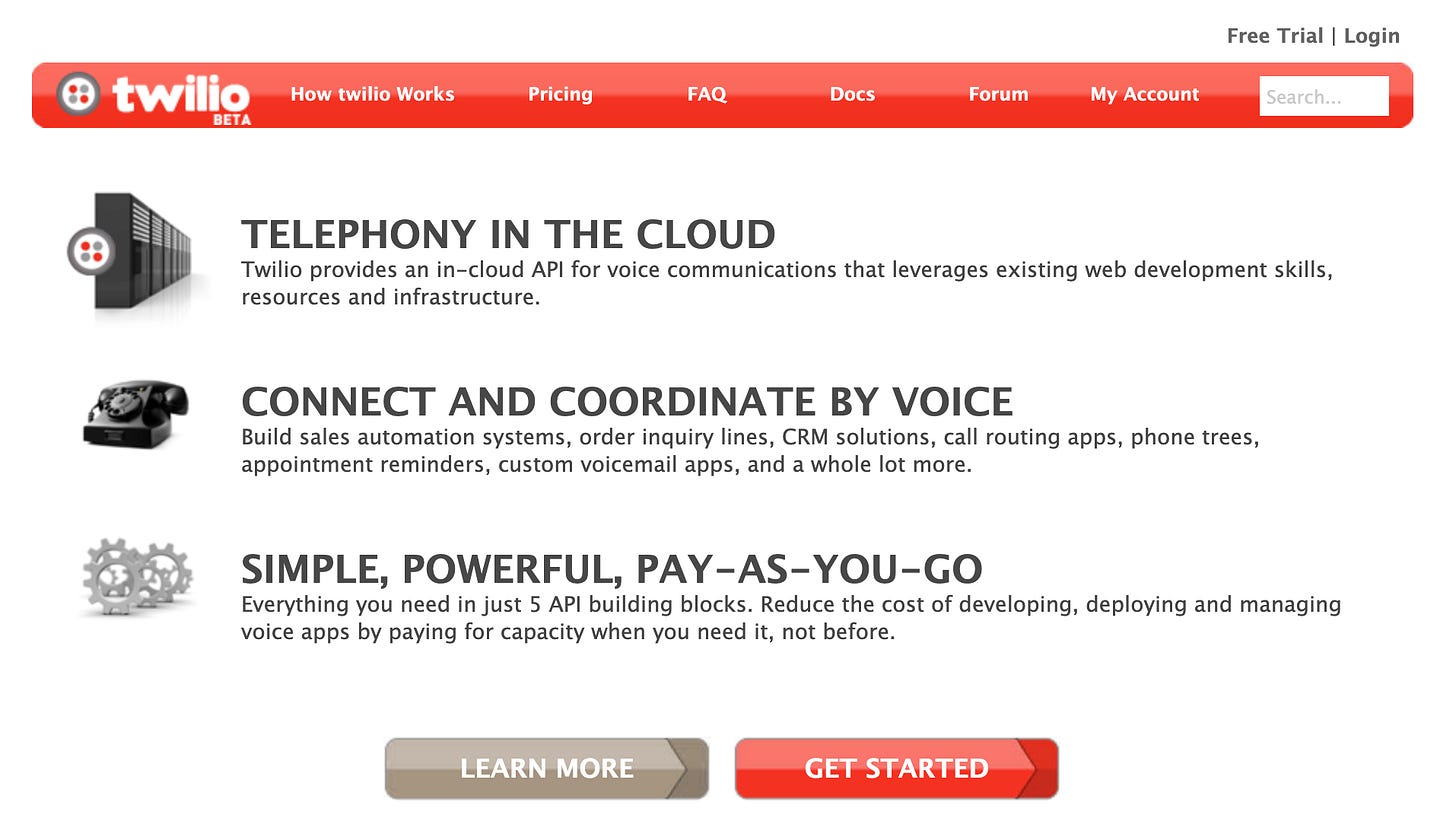
In November 2008, Twilio launched on TechCrunch in private beta. A couple days before the news, Dave McClure (angel investor and founder of 500 Startups) used the service to rickroll Michael Arrington of TechCrunch, resulting in the company's first press hit. (source)
Slack
“With help from an impressive press blitz (based largely on the team's prior experience — i.e. use whatever you've got going for you), they welcomed people to request an invitation to try Slack. On the first day, 8,000 people did just that; and two weeks later, that number had grown to 15,000.
The big lesson here: Don't underestimate the power of traditional media when you launch.”
— Stewart Butterfield, CEO (source)
In summary
The three strategies to acquire your first ten B2B customers
👋 Tap your personal network: friends, investors, former colleagues
🧗♀️ Seek out your customers where they are: online communities, offline events, door to door
🗞 Get press: Orchestrate a launch
Key questions to ask yourself:
Who in your network could be a potential customer? How could you quickly build a network?
Who are your target customers, and where they currently spending time, online or offline?
What’s a unique and untold story you can pitch press?
That’s it for this week! Hit me up if you have any stories, feedback, or insights to share. Otherwise, see you next week!
[Don’t miss the follow-up to this post: How today's fastest-growing B2B startups turned their early users into paying customers]
Thank you 🙏
Andreas Birnik, Cailen D’Sa, Cameron Walters, ChenLi Wang, Dennis Yang, Dylan Field, Frederic Kerrest, James Beshara, Joshua Merrill, Keenan Rice, Kenny Mendes, Lou Kosak, Madelin Woods, Merci Victoria Grace, Mike Cannon-Brooks, Nate Bosshard, Nick Crocker, Peter Kazanjy, Semil Shah, Shishir Mehrotra, Tai Rattigan, Tobi Lütke, Tomer London, Vrushali Paunikar, Zach Perret
If you’re finding this newsletter valuable, consider sharing it with friends, or subscribing if you aren’t already.
Sincerely,
Lenny 👋





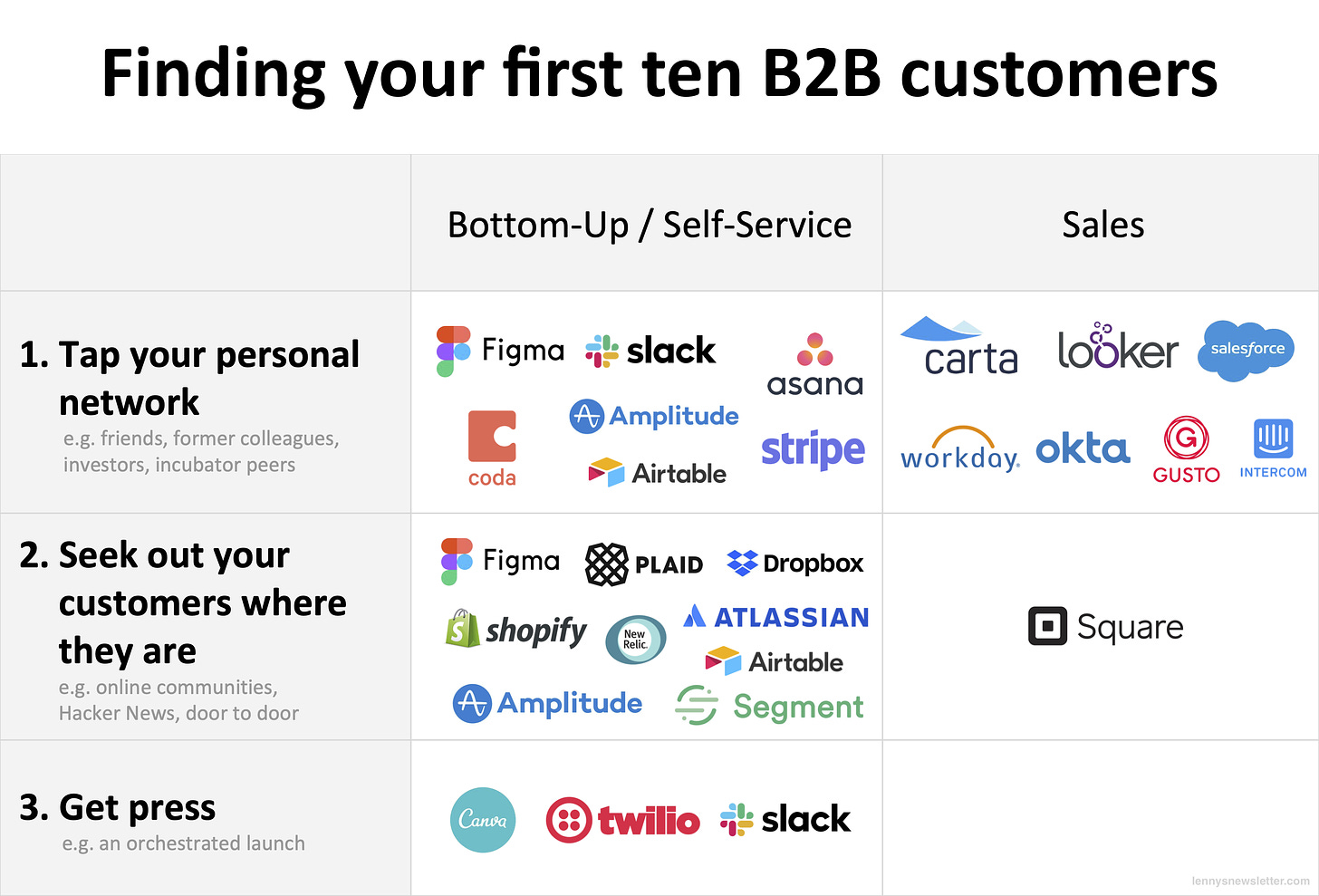
A lot of these companies had either previous successful companies or extensive networks they relied on for the "tapping your network" part of it. I wonder if that becomes an actual requirement to having a super successful startup.
Hey Lenny - tried to find the articles about the first 100 and 1000 customers, not sure if you wrote these, but in case you did, do you mind sharing the links?